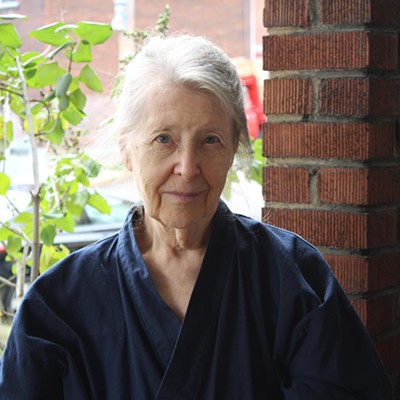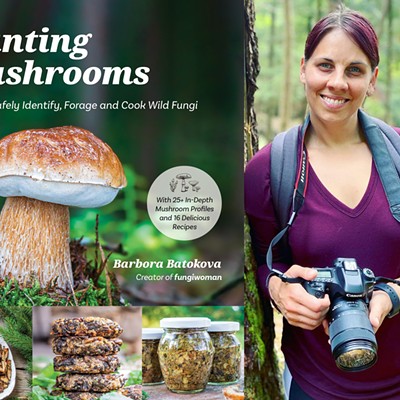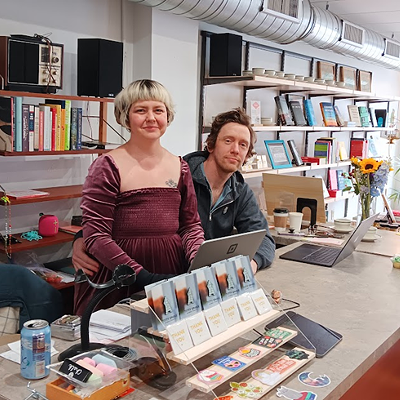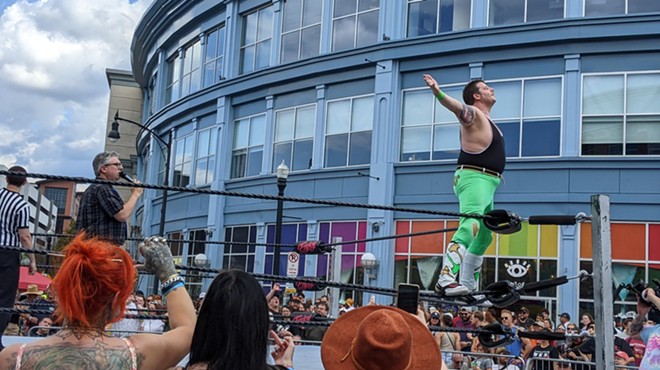At the recent relaunch party for Pittsburgh-based literary journal Creative Nonfiction as a quarterly magazine, editor Lee Gutkind showed he hasn't forgotten old insults to the genre he's strived to popularize.
Gibes included one from critic James Wolcott, in 1997. Wolcott mocked the era's profusion of memoirs, the most commercial incarnation of Creative Nonfiction's "true stories, well told" motto. "Never have so many shared so much behind so little," Wolcott wrote in Vanity Fair. He dubbed Gutkind himself creative nonfiction's "godfather."
It was no compliment -- but Gutkind embraced the moniker (even using it in a book title). And at the Feb. 28 relaunch party, Gutkind climbed the spiral staircase in Shadyside's Alto Lounge to remind a couple hundred revelers that when he founded CNF, in 1993, "People laughed at [the genre]. ... People started calling it 'faction.'" But today, he claimed, "Creative Nonfiction is one of the most important journalism magazines in the world."
Gutkind's biased, of course. The nonprofit CNF's circulation is a modest 4,500 (though the press run was doubled for the relaunch). And with exceptions including Gutkind himself (who now teaches at Arizona State University) and longtime managing editor Hattie Fletcher, the staff is mostly volunteer.
Still, a periodical whose contributors have included Diane Ackerman, Mark Bowden, Tracy Kidder, Cynthia Ozick and George Plimpton is doing something right. And the sleek redesign, by Nathan Davidson and Courtney Centner, of North Side design studio Little Kelpie, promises to give CNF more impact still.
For 37 issues, CNF was basically a paperback book. Now it's got the newstand-friendly dimensions of Esquire -- though with 90 two-color matte pages, not 140 glossy, full-color ones. And while only ads sport photos, CNF features more graphics and spot illustrations.
But the emphasis remains on the words, with author interviews and writing advice now joining the essays and narrative journalism. The spring issue includes Details editor-at-large Jeff Gordinier's in-depth interview with Dave Eggers (spotlighting Zeitoun, Egger's new nonfiction book about a Syrian immigrant's Hurricane Katrina travails). Ian Morris, of venerable, soon-to-be-online-only TriQuarterly, ponders the future of the literary magazine. And a seven-writer themed package on immortality includes both philosopher Todd May ("Teaching Death") and an excerpt from Rebecca Skloot's best-selling book The Immortal Life of Henrietta Lacks.
Skloot read at the relaunch. She noted that work on her critically acclaimed book began when she was Gutkind's grad student at Pitt, 12 years ago.
"Creative nonfiction" remains a baggy label: Most of the magazine's contents are readily classified as narrative journalism, personal essay or memoir, with a little experimentalism thrown in.
Yet while the genre continues taking lumps for works like James Frey's partly fictionalized "memoir" A Million Little Pieces, there's no denying the best of it. Last word goes to veteran essayist Phillip Lopate, whose piece on veracity in storytelling in the new CNF upbraids writers who "thinly imagine" real-life scenes they haven't actually witnessed.
"The fact that we can see things in our minds' eyes doesn't necessarily make them literarily valid," Lopate writes. "The harder imaginative act for nonfiction writers is seeing the pattern in actual experience and putting it into some sort of order so that what seemed random is given narrative significance and symbolic resonance. Understanding is thick imagining."













